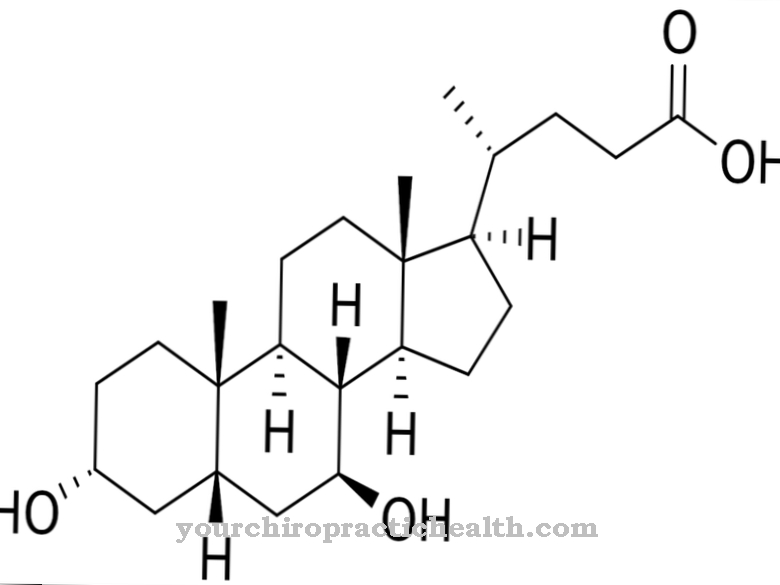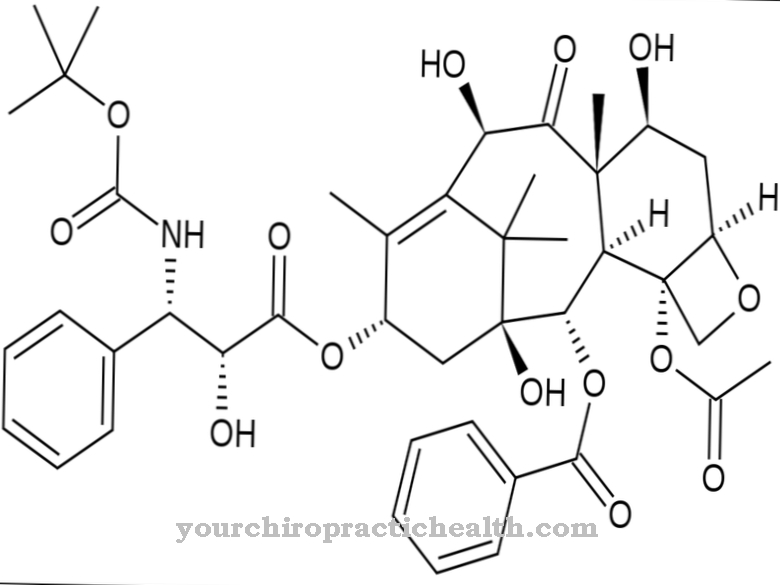Cyclosporine is a drug that is one of the immunosuppressants. It is obtained from the tubular mushrooms Cylindrocarpon lucidum and Tolypocladium inflatum. Chemically, it is a cyclic peptide made up of eleven amino acids.
What is Cyclosporine?

Cyclosporine is an immunosuppressant with a narrow therapeutic window. The gap between its intended therapeutic and its toxic effects is very small. Therefore, blood levels must always be checked when it is used.
Cyclosporine has a suppressing effect on the immune system. It is therefore used for diseases that are characterized by an excessive reaction of the immune system. This includes the group of autoimmune diseases. Cyclosporine is also used to suppress rejection reactions in organ transplants.
It is a cyclic peptide that consists of eleven amino acids. It occurs in larger concentrations in the Norwegian sac fungi Cylindrocarpon lucidum and Tolypocladium inflatum. Hence it is isolated from these mushrooms. Today cyclosporine is produced synthetically for medical use. When isolated, it is a white solid that dissolves in alcohol, methanol, chloroform, or ether. It is administered orally as a capsule or tablet or parenterally, bypassing the digestive tract (e.g. through a syringe).
Because of its immunosuppressive effects, cyclosporine can also cause several side effects when used. However, the drug has greatly revolutionized medicine in terms of organ transplant rejection. The survival time of the patients could be increased significantly. The active ingredient was discovered in the early 1970s by the Swiss microbiologists Hartmann Stähelin and Jean-François Borel.
Pharmacological effect
The pharmacological effect of cyclosporine is based on its inhibitory effect on the enzyme calcineurin. Calcineurin activates the synthesis of interleukins by stimulating the corresponding genes. The enzyme calcine urin is contained in T-lymphocytes and controls the synthesis of interleukin 2 from there.
In the case of autoimmune diseases, however, the body's own proteins are combated. To stimulate the immune system, calcineurin attaches itself to the protein NF-AT and dephosphorylizes it. In the dephosphorylized state, this protein stimulates the corresponding genes to transcribe interleukins, which are responsible for immune reactions.
This cascade of reactions is inhibited by cyclosporine. To do this, cyclosporine attaches itself to certain receptors on the T lymphocytes. There it binds to so-called immunophilins (intracellular binding proteins) and forms a complex with them. This complex, in turn, is deposited on calcineurin. This blocks this enzyme and can no longer activate the transcription factor NF-AT by dephosphorylation. The further formation of interleukins does not take place, whereby the immune reactions of the body are weakened.
Medical application & use
Cyclosporine is widely used in autoimmune diseases, psoriasis, inflammatory skin diseases, rheumatic diseases and organ transplants. In autoimmune diseases, the immune system is directed against one's own body and in organ transplants against the transplanted organs in the form of rejection reactions. Organ transplant patients in particular benefit from the use of this drug. Since its use, the survival time of those affected has increased dramatically.
Serious autoimmune diseases such as ulcerative colitis or glomerulonephritis can also be treated well. In ulcerative colitis, the intestine is attacked by its own immune system. This condition is characterized by severe intestinal inflammation, which can eventually destroy the intestines as well. Glomerulonephritis is an abacterial inflammation of the glomeruli of the kidneys. If left untreated, it can lead to severe renal insufficiency.
Psoriasis (psoriasis) can also be treated well with the use of cyclosporine. In the case of inflammation of the conjunctiva and cornea, cyclosporine is used through topical application. Medicines containing cyclosporine are applied to the affected areas.
Typically, cyclosporine is also used for neurodermatitis. Neurodermatitis is an inflammatory, very itchy skin disease that is caused by allergic reactions. Finally, an important area of application is rheumatoid arthritis. Rheumatoid arthritis is one of the autoimmune diseases, whereby the immune system is directed against the body's own joints.
Cyclosporine also treats severe inflammatory eye diseases that can lead to blindness. Treatment with cyclosporine is life-saving in many cases (organ transplantation, severe autoimmune diseases that destroy organs). It also improves the quality of life for many patients with chronic inflammatory diseases.
You can find your medication here
➔ Medicines to strengthen the defense and immune systemRisks & side effects
Unfortunately, cyclosporine cannot be used without restrictions as it can cause many side effects. The side effects and contraindications result in large part from the weakening of the immune system. Patients with infections must not be treated with cyclosporine. The immunosuppression could exacerbate the infection. Pregnant and breastfeeding women should not be treated with cyclosporine either, as the drug could be harmful to the child.
The simultaneous use of phototherapy for psoriasis and treatment with cyclosporine increases the risk of skin cancer. Therapy with cyclosporine is also counterproductive in the case of kidney damage, as the kidneys can be further damaged. Overall, the use of cyclosporine increases the susceptibility to infection, which is due to the reduced immune reaction. Initially, gastrointestinal disorders can occur, leading to diarrhea, nausea and vomiting. Edema can also develop. There can also be an increase in body hair.
The list of possible side effects is very long. However, these do not have to occur. Digestive disorders, headaches, inflammation of the gums or high blood pressure are more common. Therefore, blood tests and blood pressure measurements should be performed regularly during treatment with cyclosporine.



























